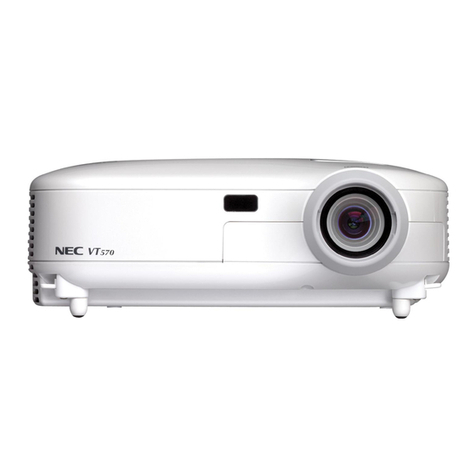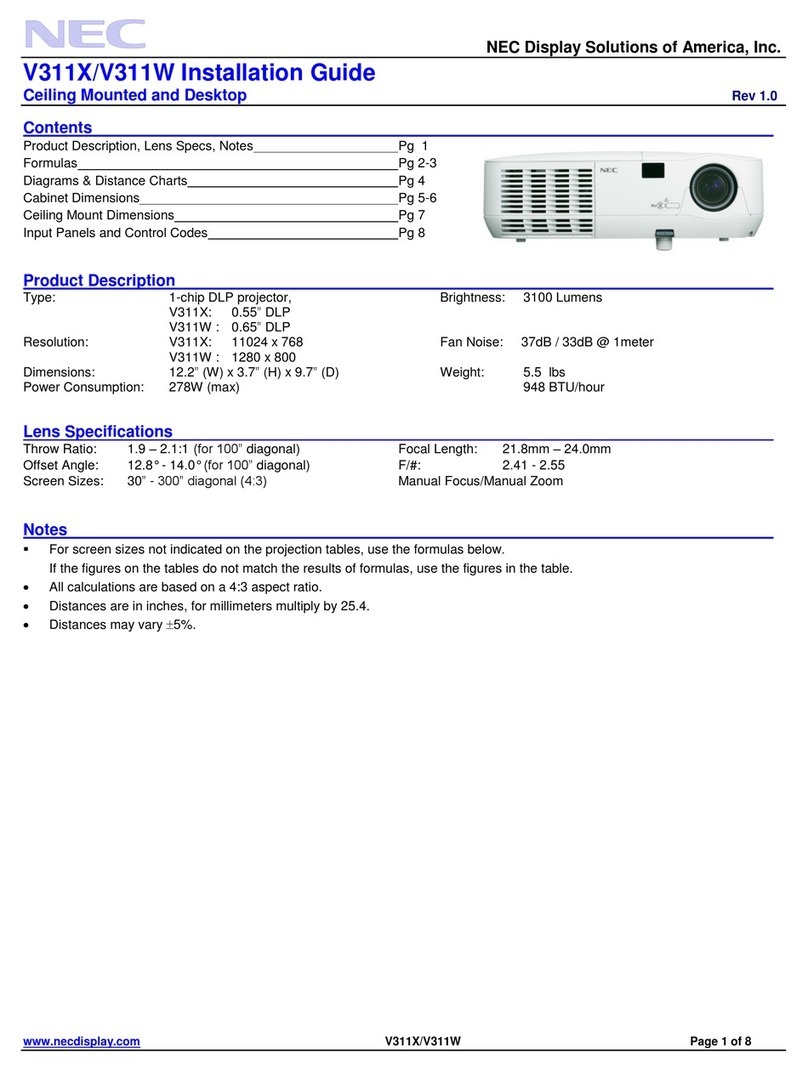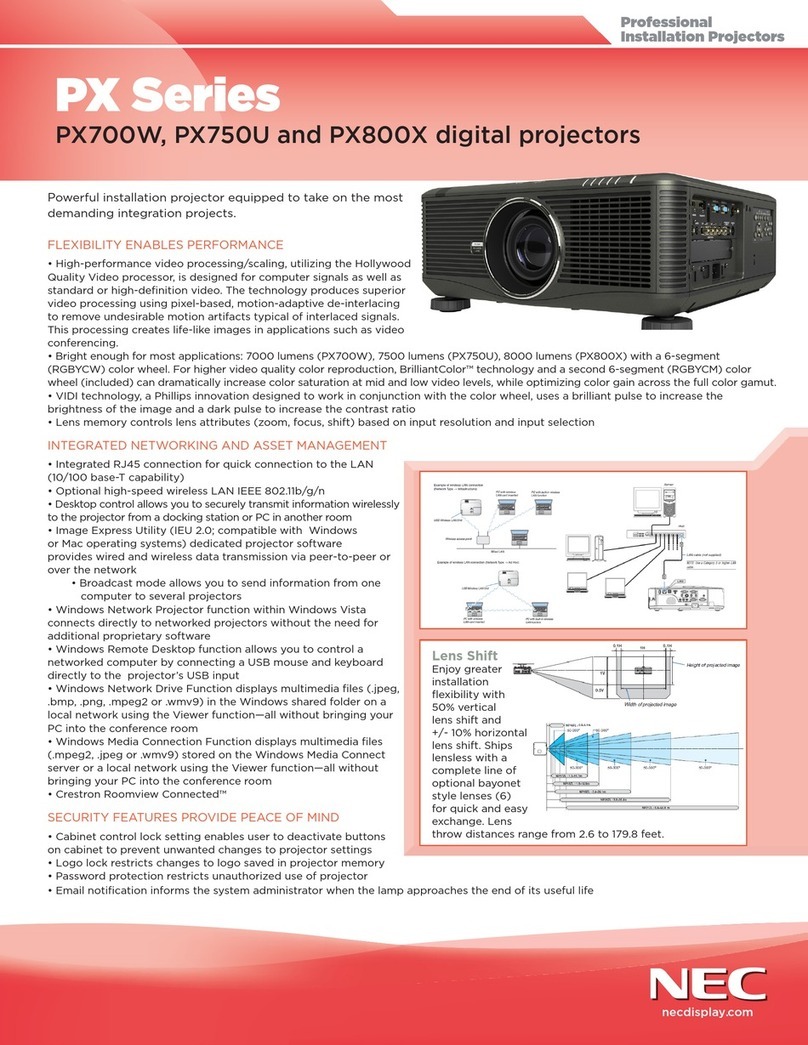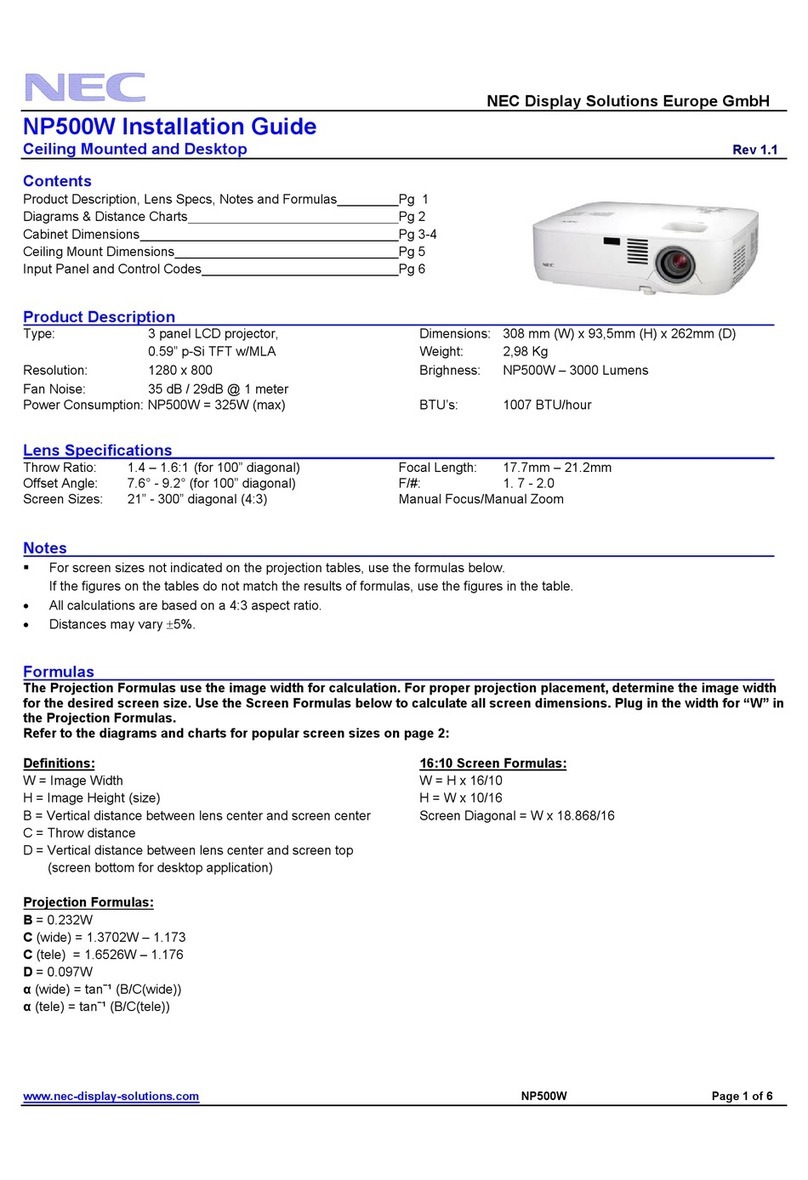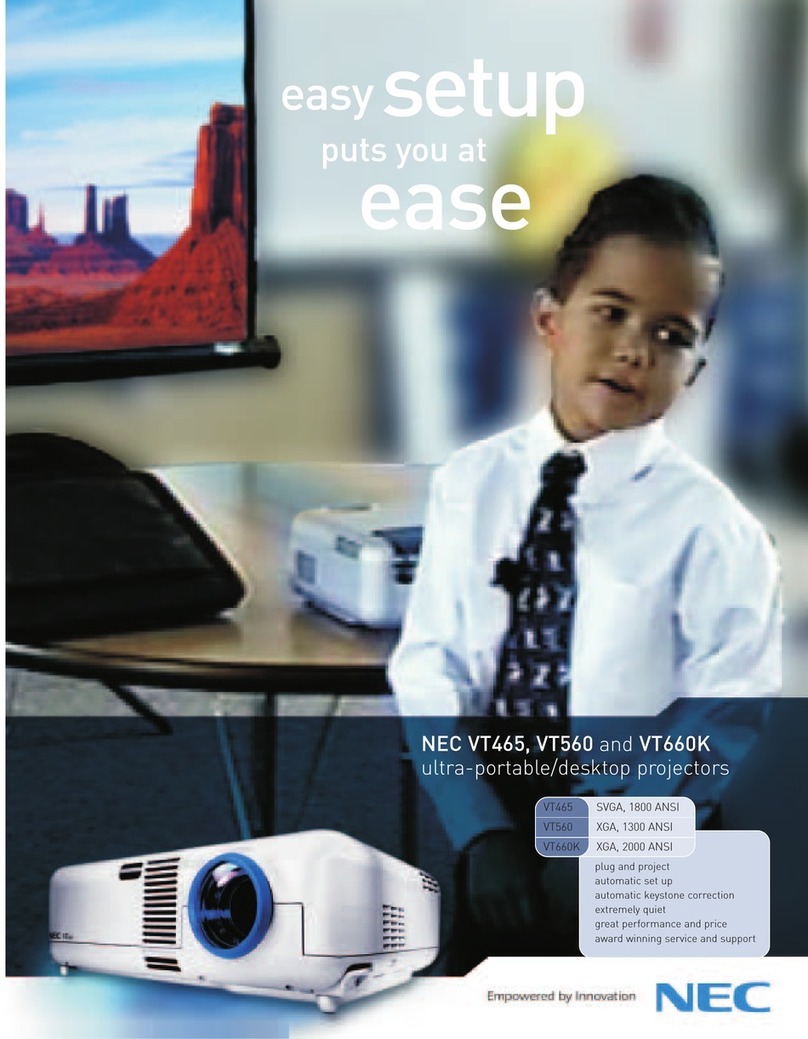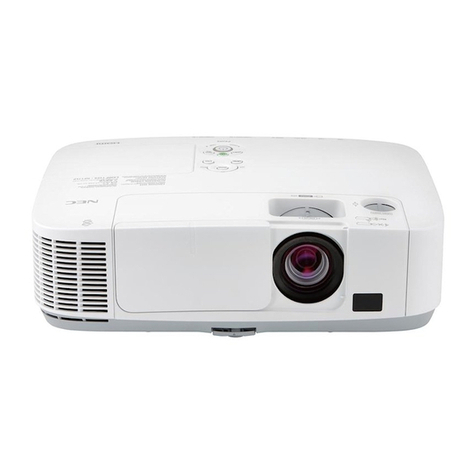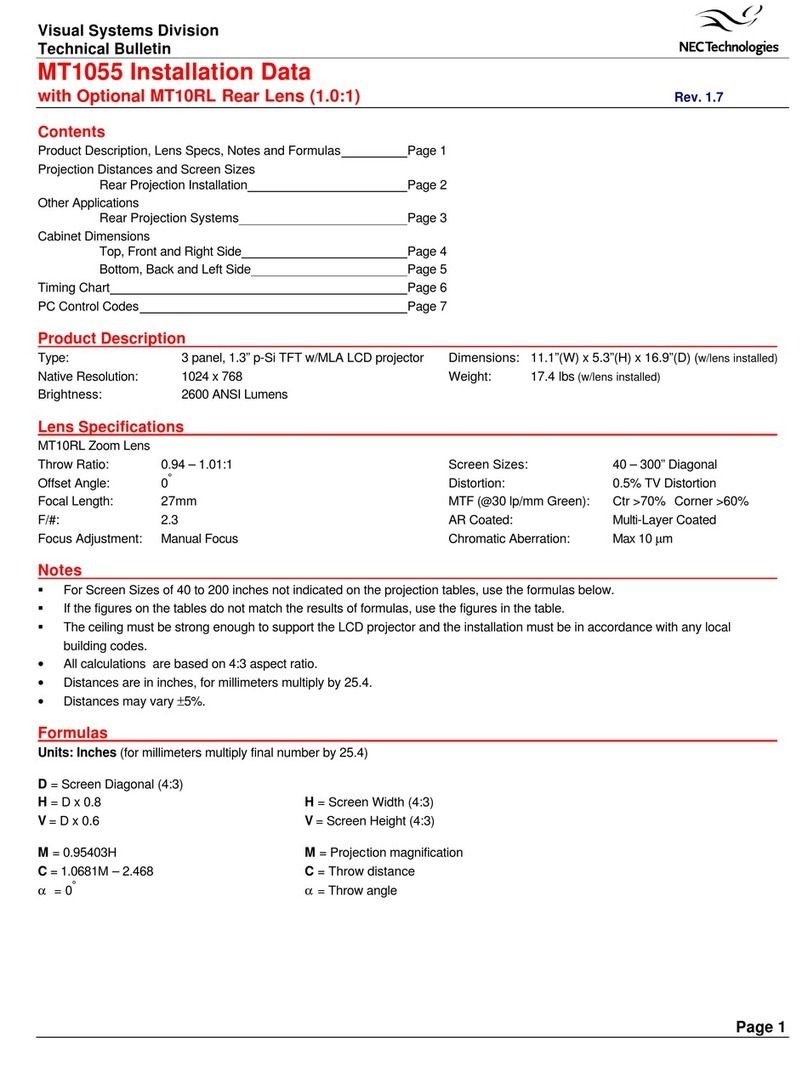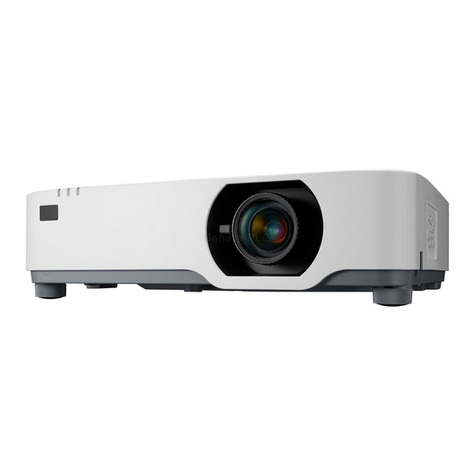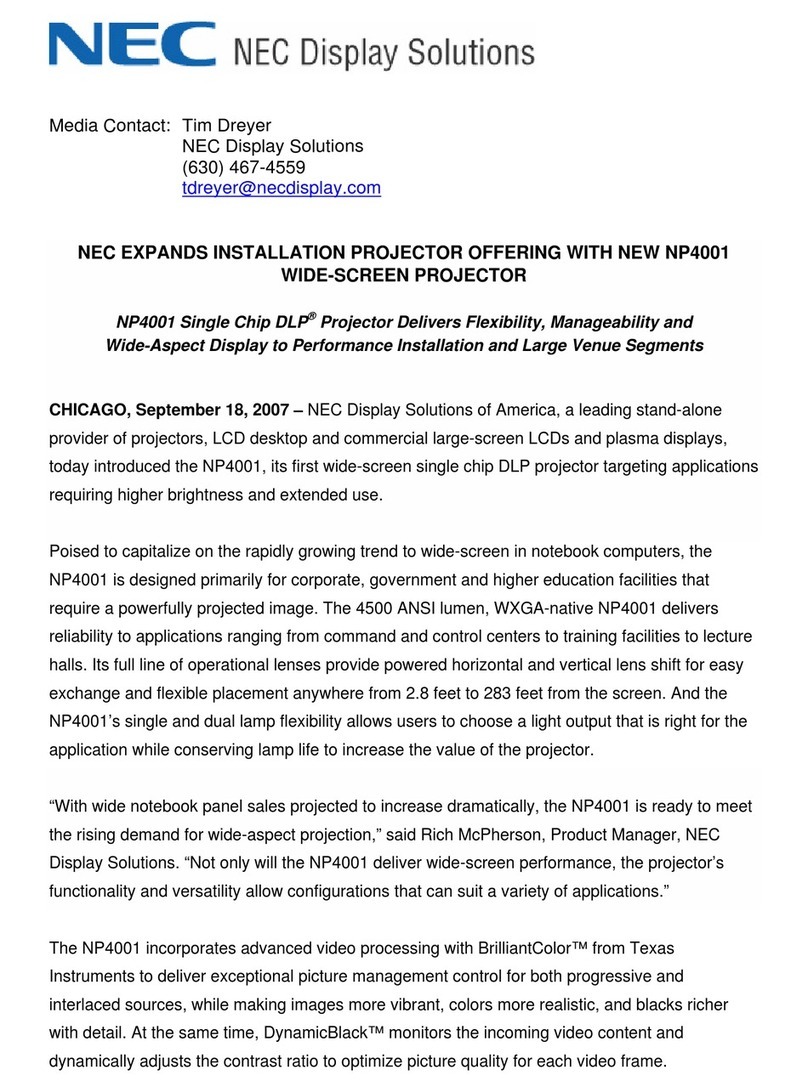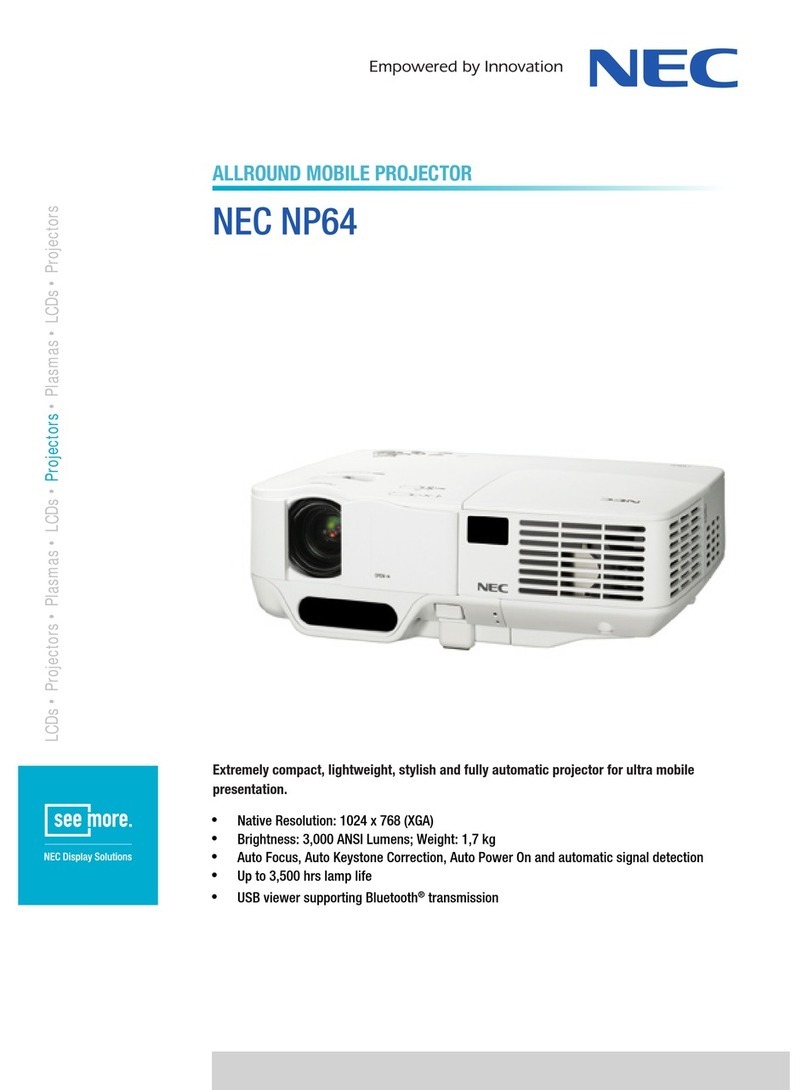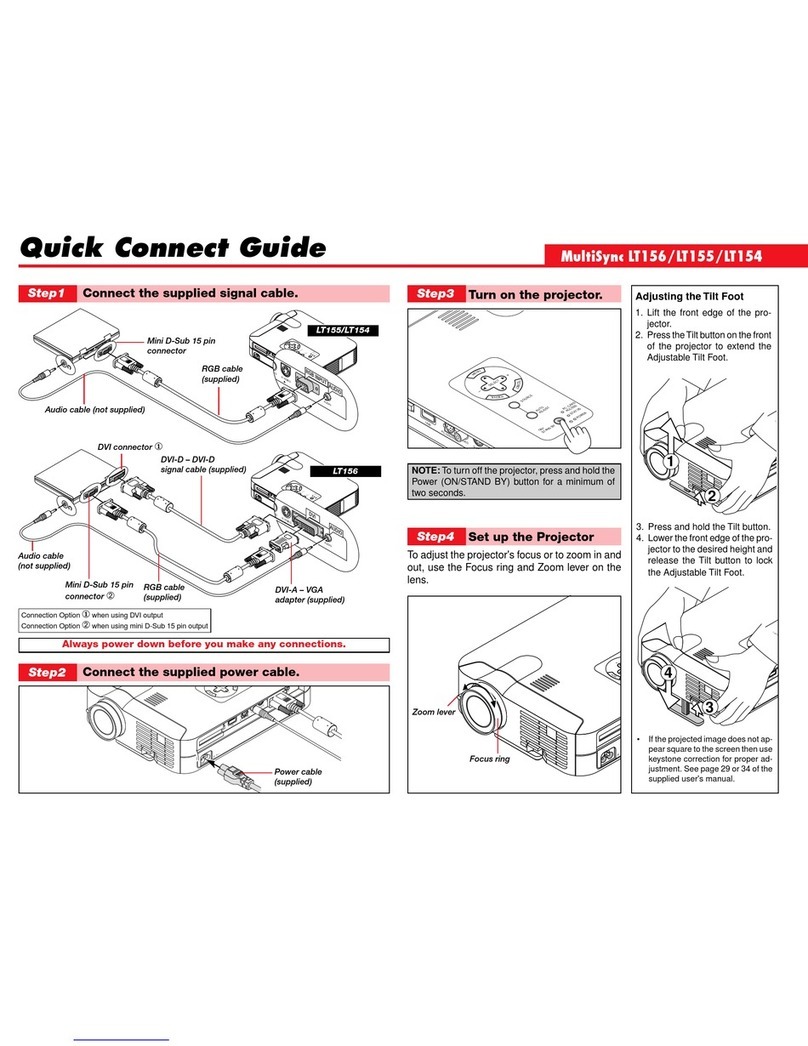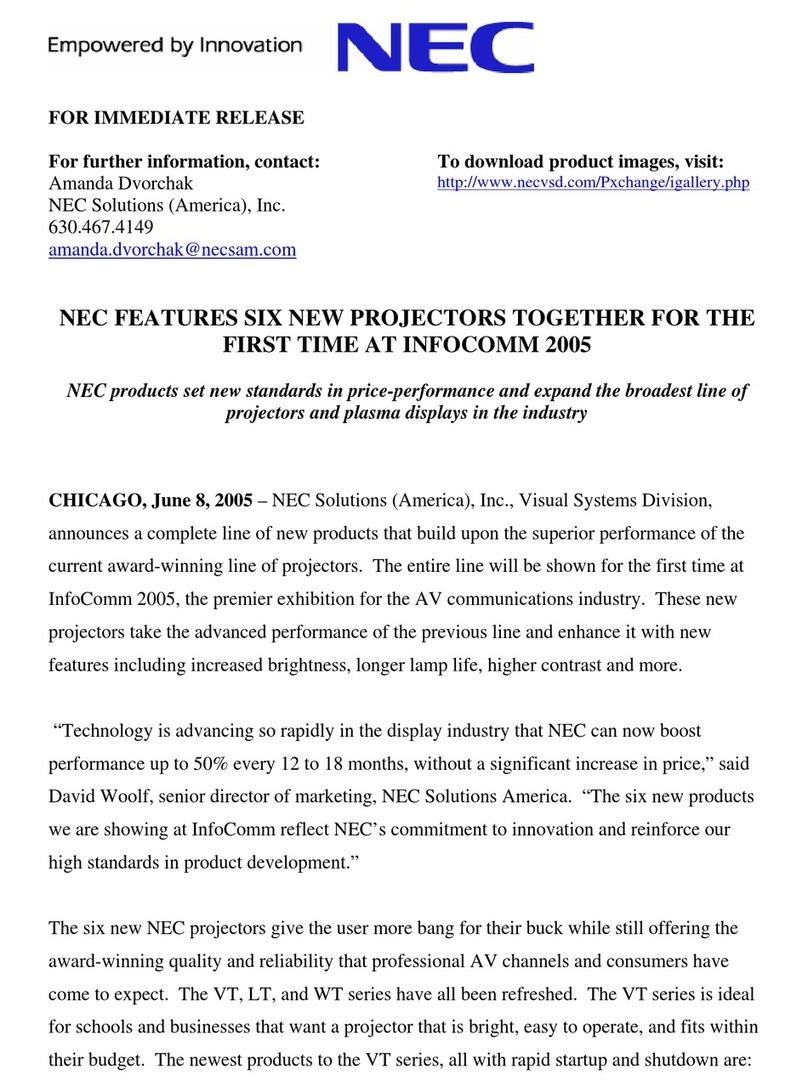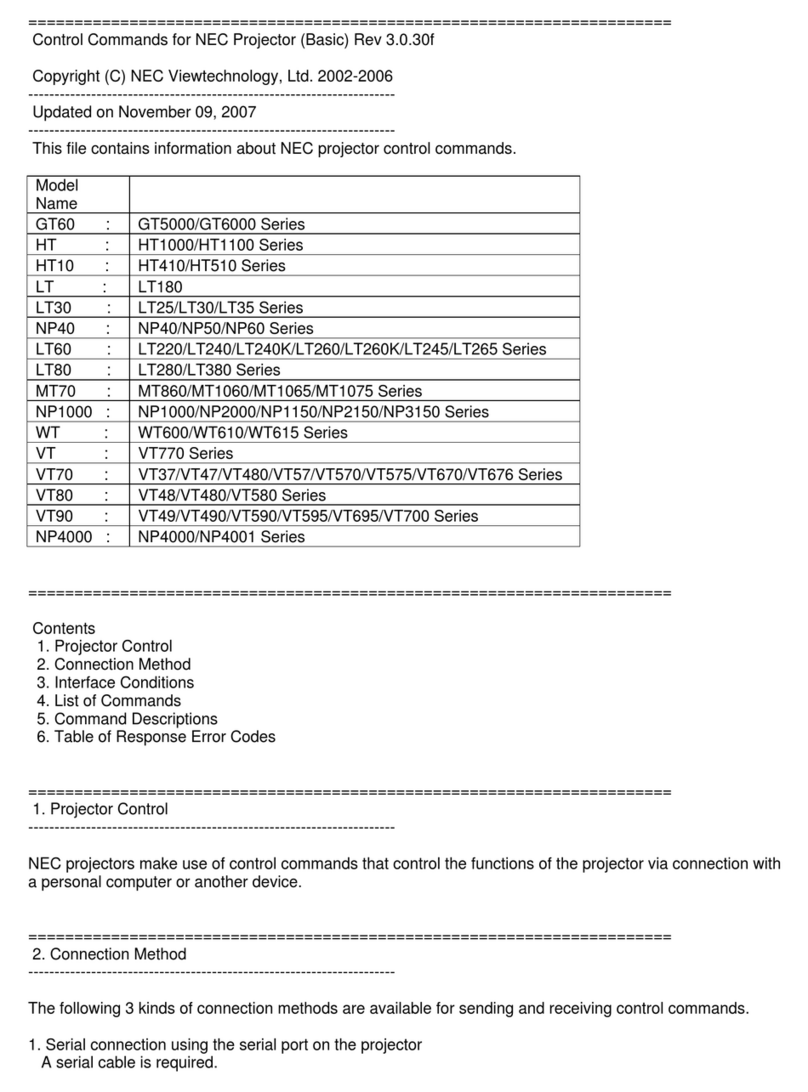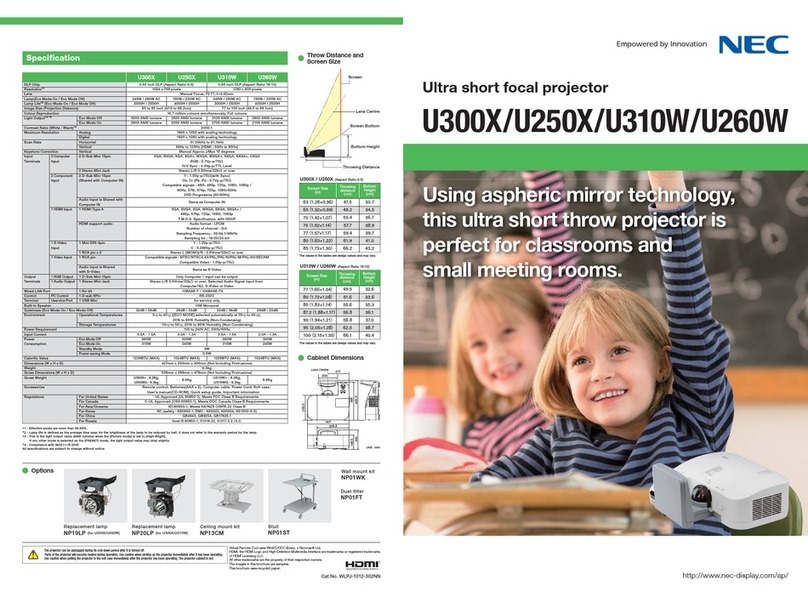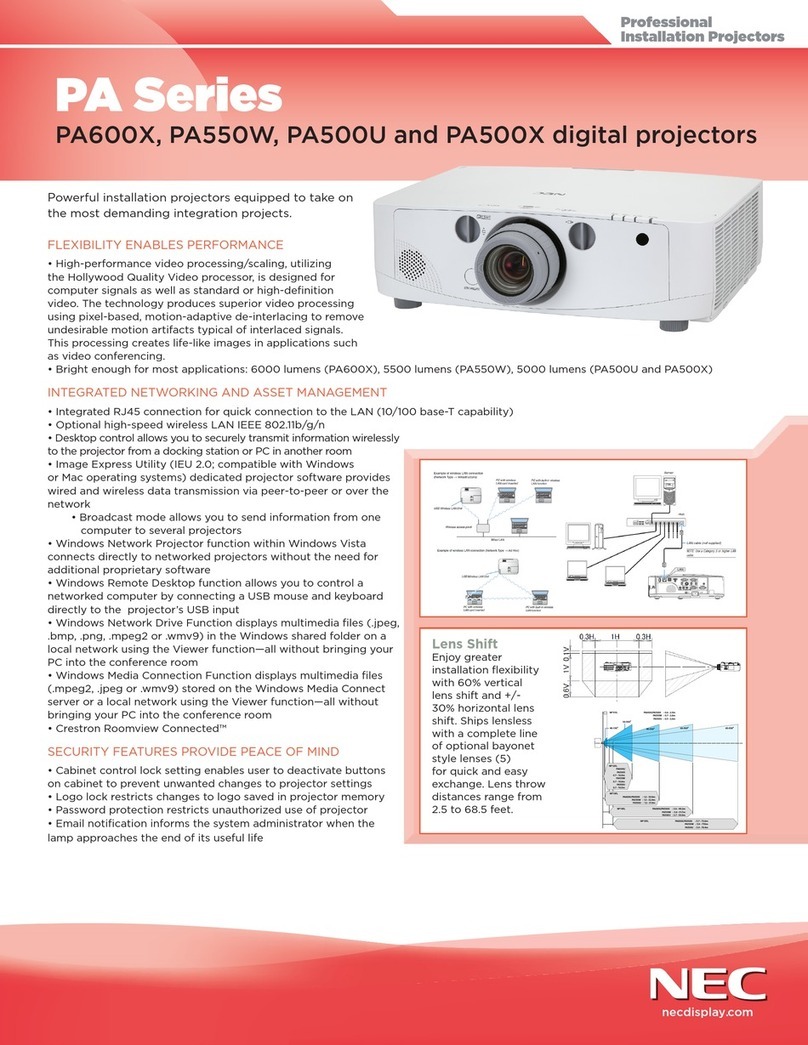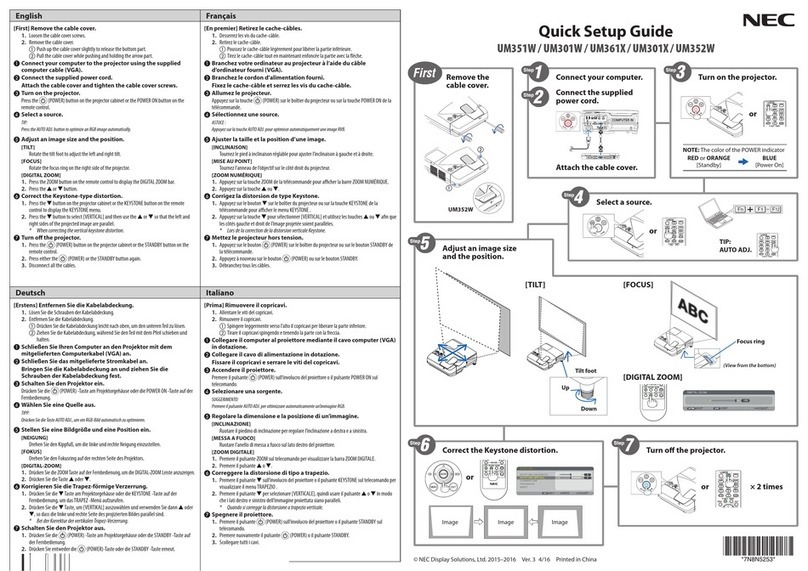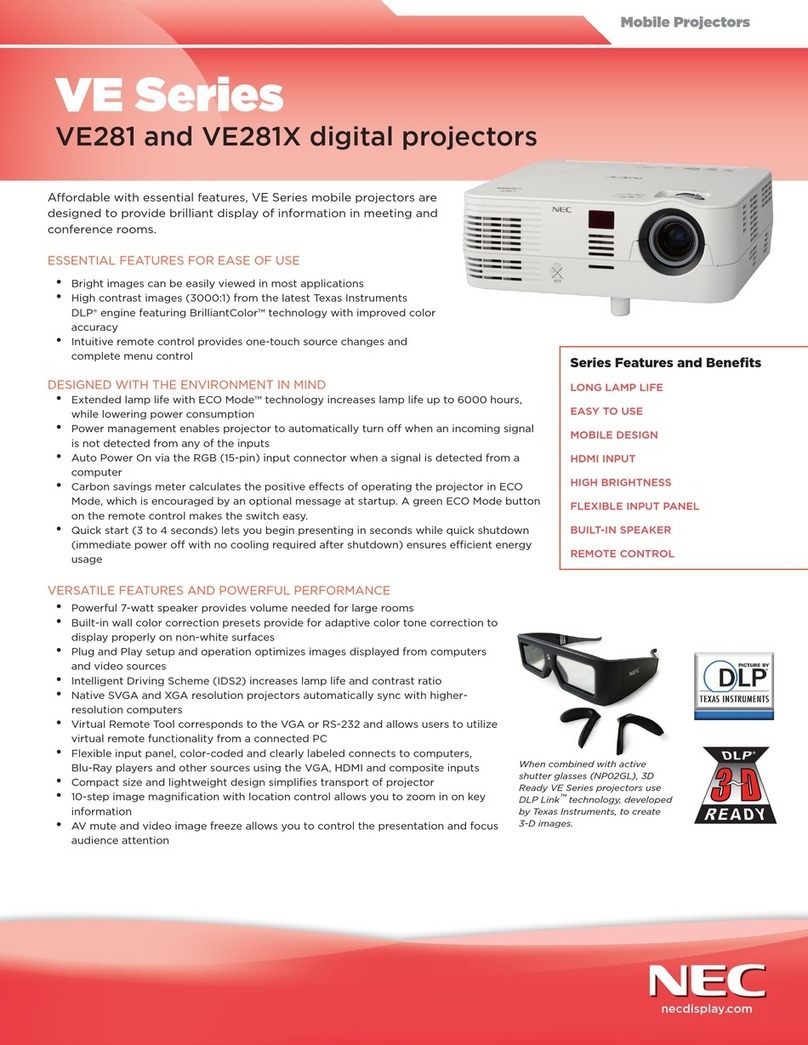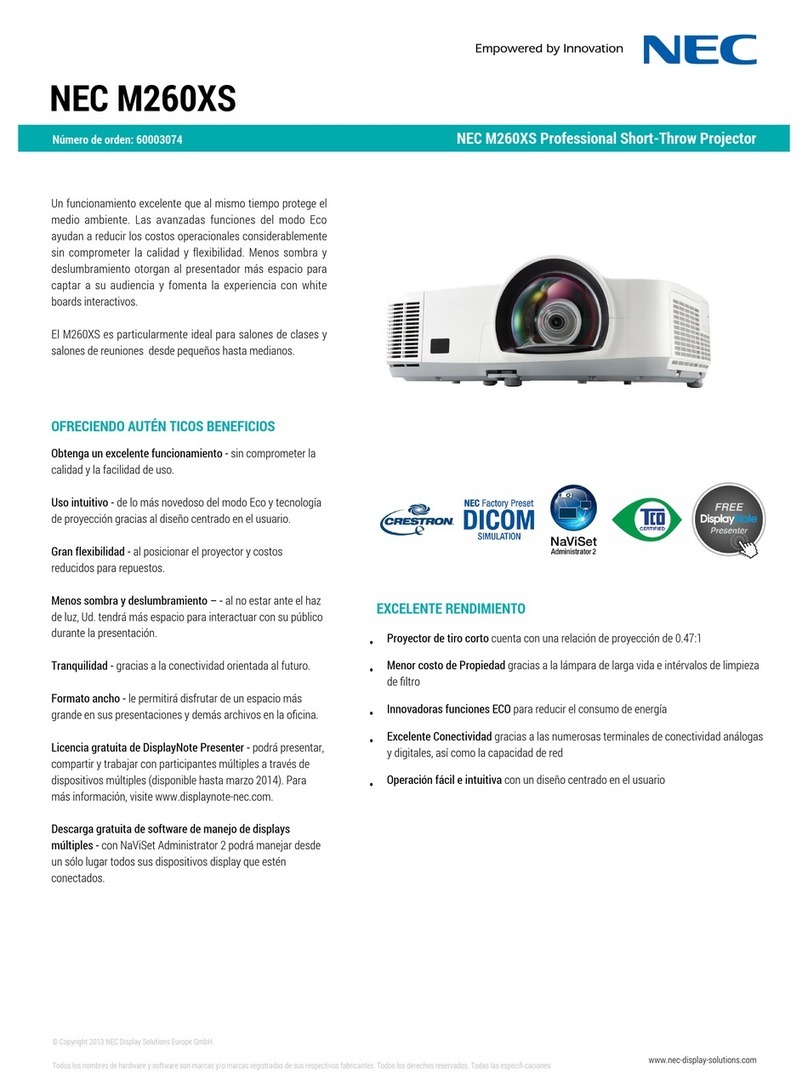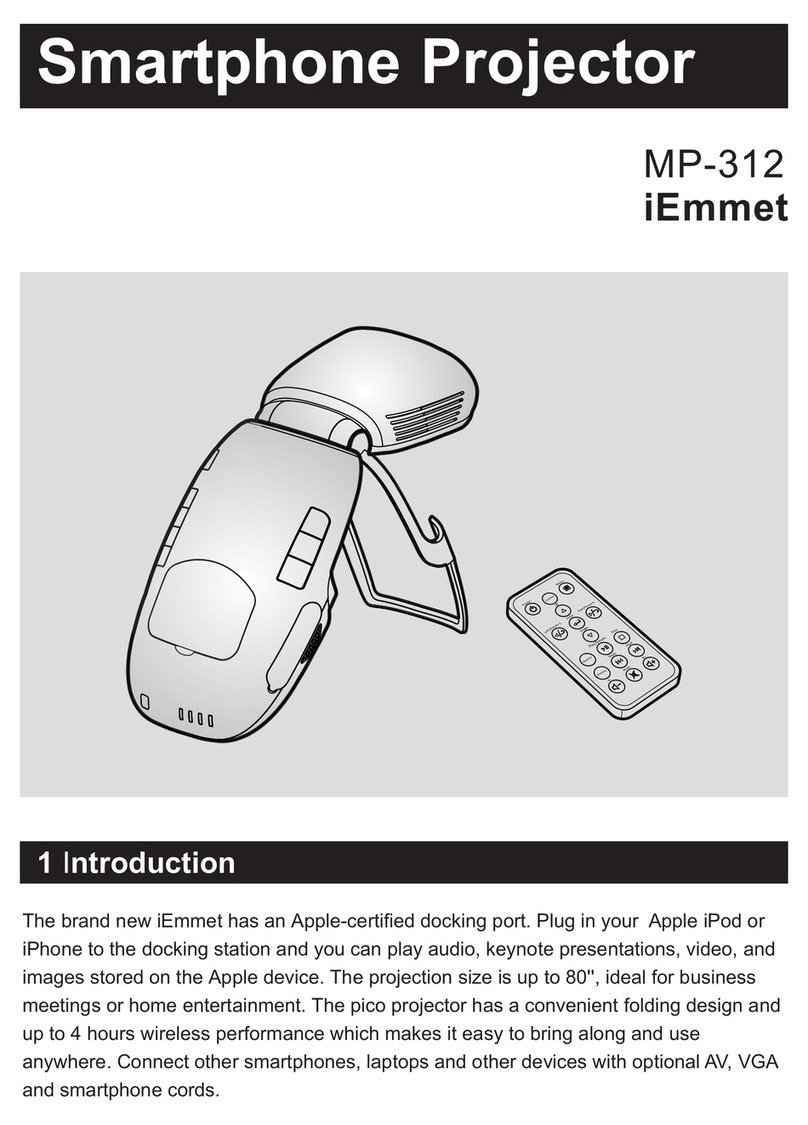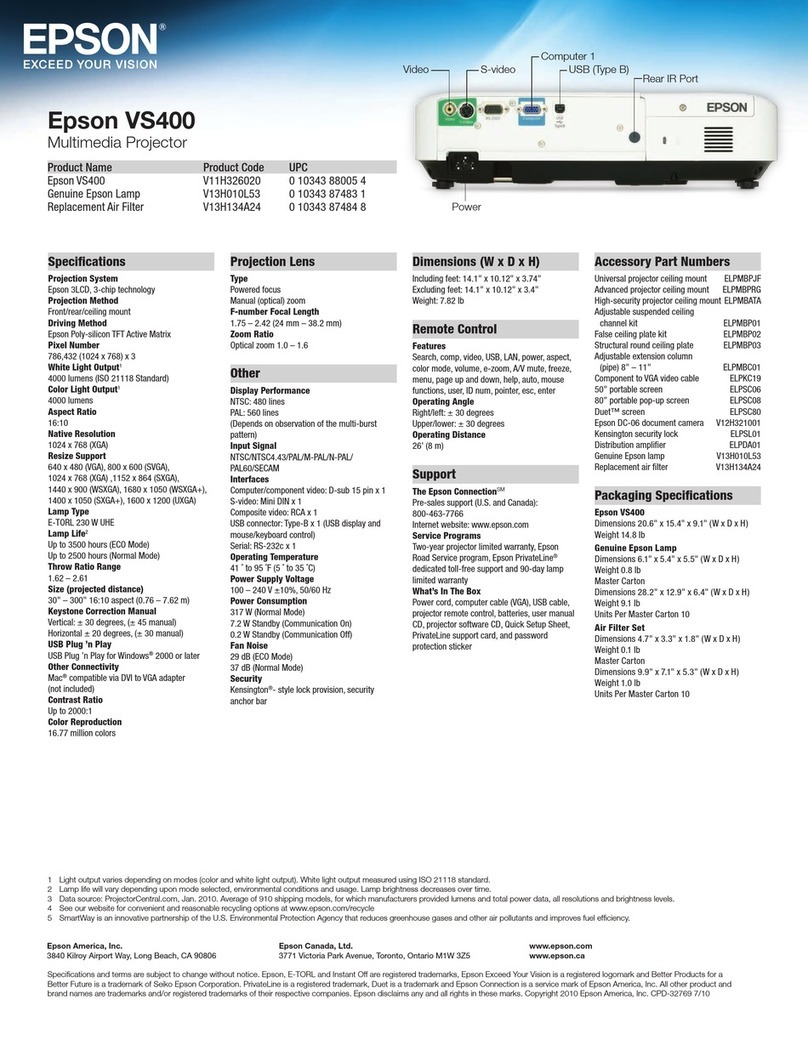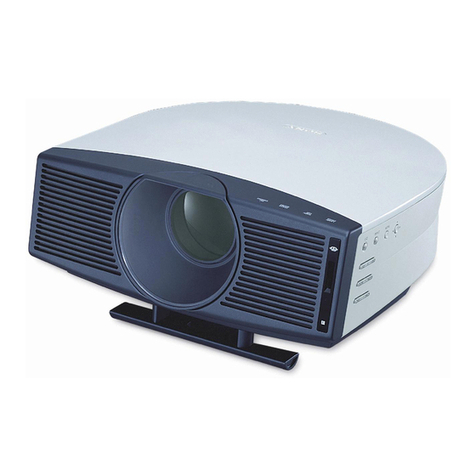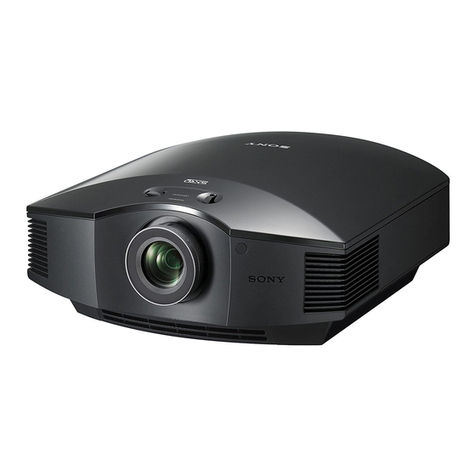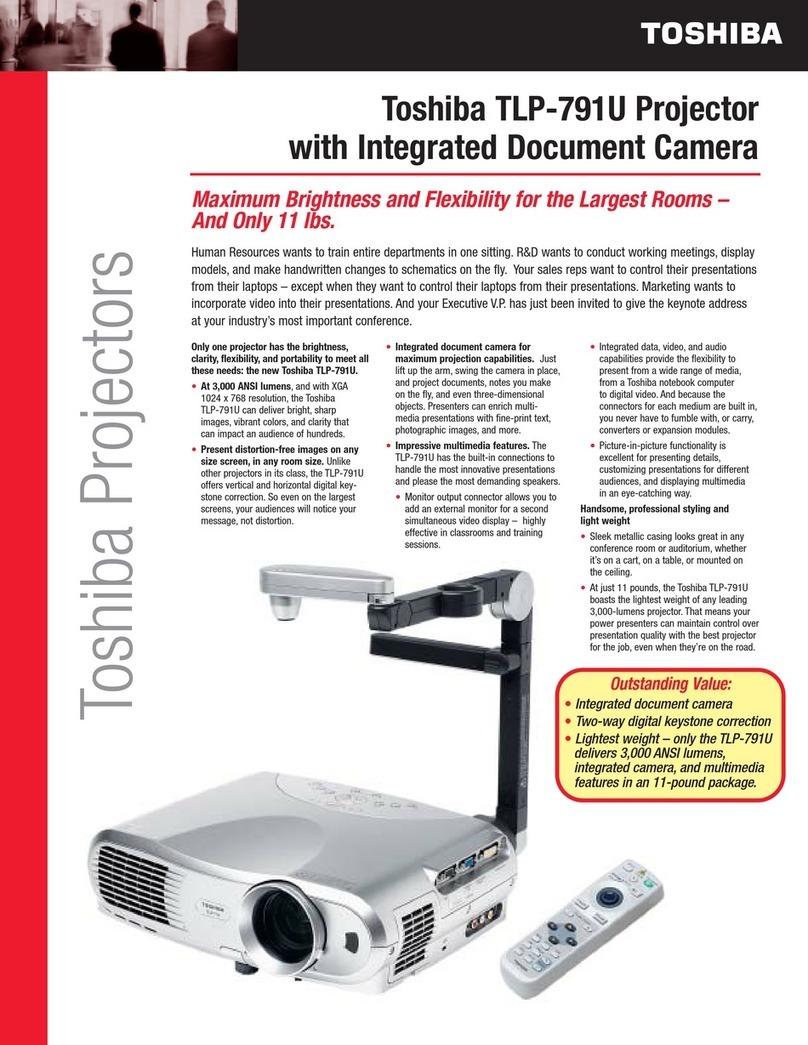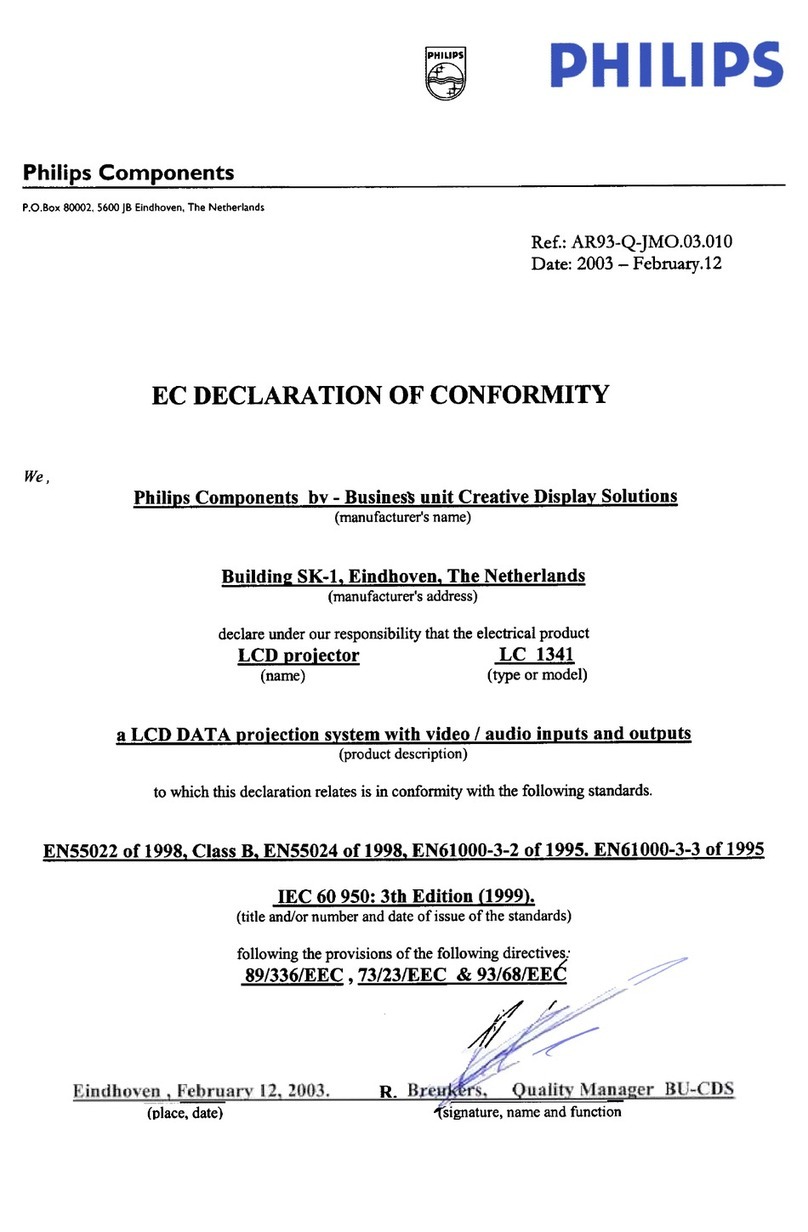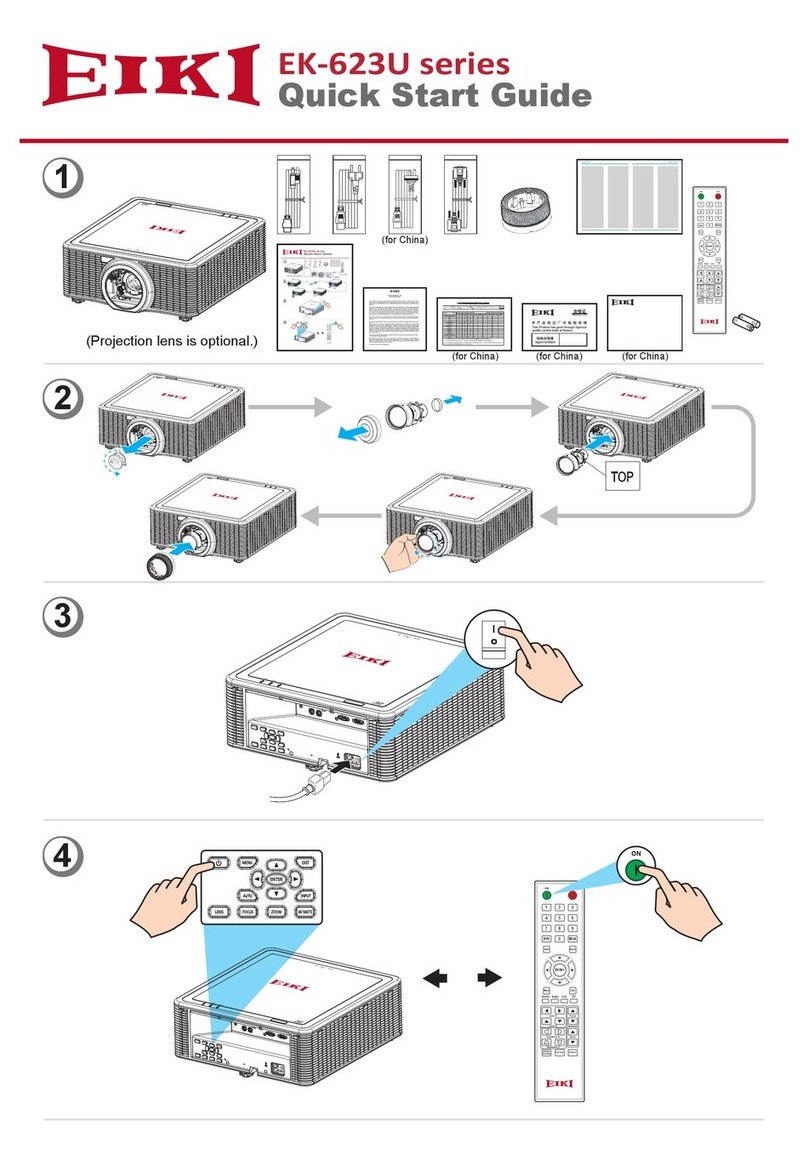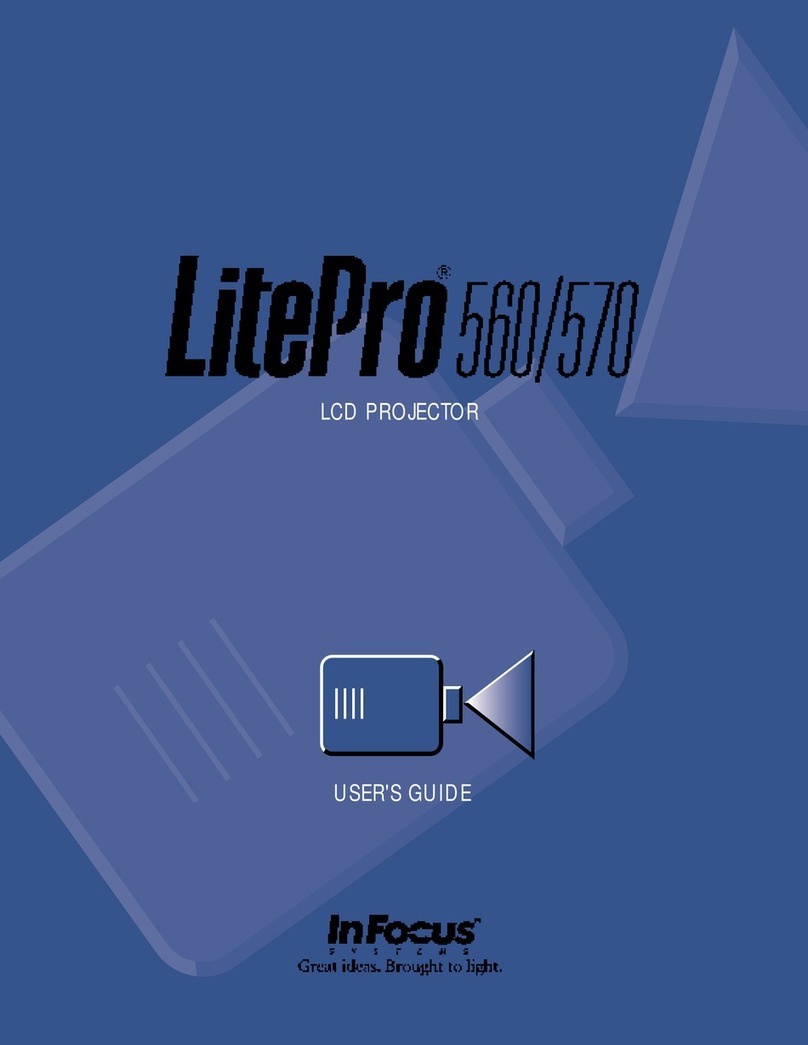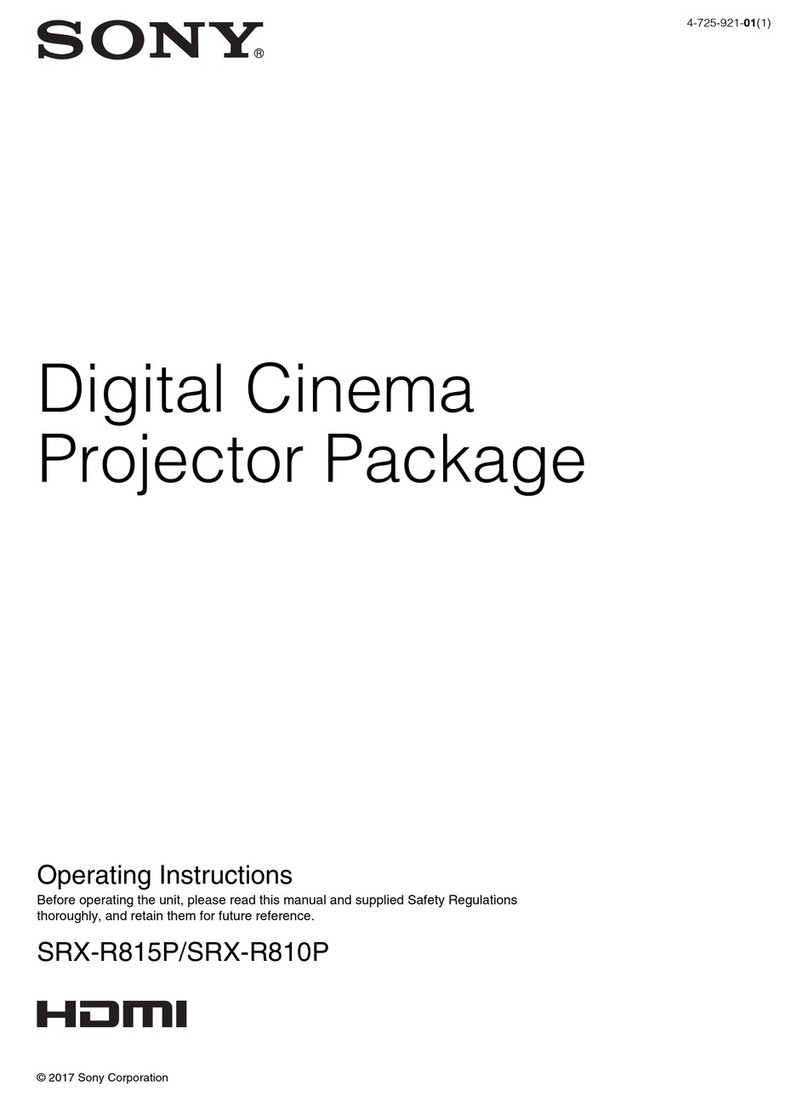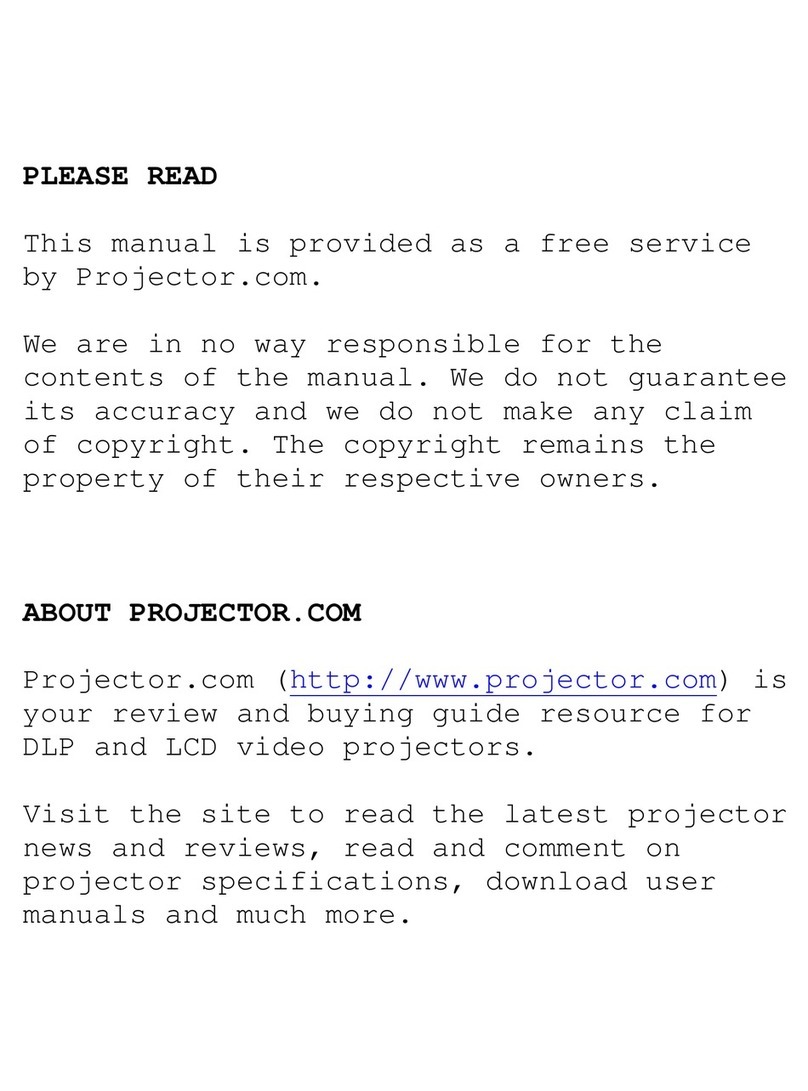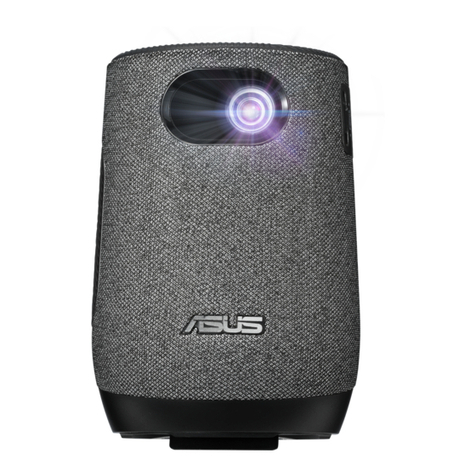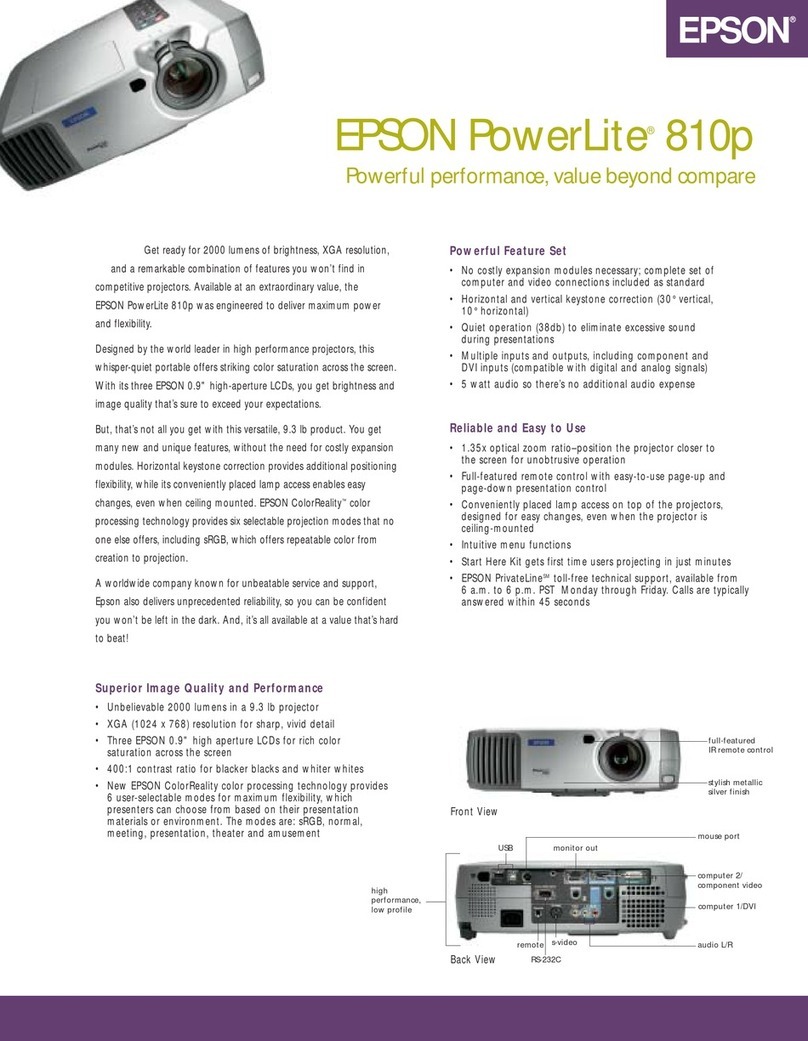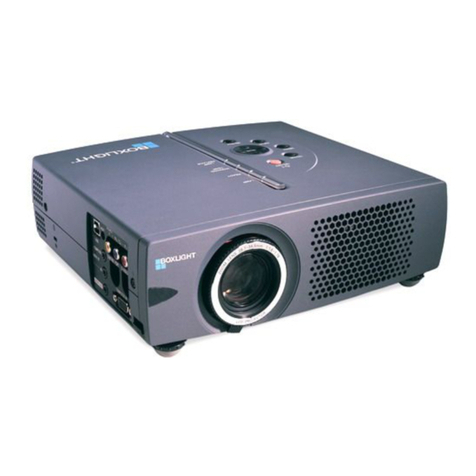
Vorsichtsmasnahmen zur Vermeidung von Bränden
und elektrischen Schlägen
1. Sorgen Sie für ausreichende Belüuftung und stellen Sie
außerdem sicher, dass die Lüftungsschlitze frei bleiben, damit
sich innerhalb des Projektors kein Hitzestau bilden kann.
Lassen Sie mindestens 20 cm Abstand zwischen Ihrem
Projektor und der Wand. Lassen Sie mindestens 50 cm
Abstand zwischen der Belüftung des Stromversorgungsgeräts
der Lampe und anderen Gegenständen.
Schließen Sie den Entlüftungsanschluss des Projektors an
die Entlüftungsanlage an, die eine Kapazität von 16m3/min
oder mehr hat.
2. Vermeiden Sie, dass Fremdgegenstande wie Büroklammern
und Papierschnipsel in den Projektor fallen. Versuchen Sie
nicht, in den Projektor gefallene Gegenstände selbst zu
entfernen. Stecken Sie keine Metallgegenstände wie einen
Draht oder Schraubendreher in Ihren Projektor. Wenn etwas
in den Projektor gefallen ist, müssen Sie sofort den Netzstecker
ziehen und den Gegenstand von qualifiziertem
Servicepersonal entfernen lassen.
3. Stellen Sie keine mit Flüssigkeit gefüllten Gefäße auf Ihren
Projektor. Überlassen Sie die Reparatur ausschließlich
qualifiziertem Servicepersonal, wenn Flüssigkeit
verschüttet worden ist.
4. Lichtkegel des Projektors fern. Da das von der Linse projizierte
Licht umfassend ist, können alle abnormalen Gegenstände,
die in der Lage sind, das aus der Linse austretende Licht
umzulenken, unvorhersehbare Ereignisse wie z.B. einen Brand
oder Augenverletzungen verursachen.
5. Bedecken Sie die Linse nicht mit der mitgelieferten Linsenkape
o.ä. wärend der Projektor eingeschaltet ist. Dies kann ein
Schmelzen der Kappe verursachen. Darüber hinaus würden
Sie sich aufgrund der vom Lichtausgang abgestrahlten Hitze
wahrscheinlich die Hände verbrennen.
VORSICHT:Bei unsachgemäßer Handhabung kann die
Hochdrucklampe explodieren. Überlassen Sie
die Reparatur ausschließlich qualifiziertem
Servicepersonal.
Vorsichtsmaßnahmen bezüglich der Lampe: Bitte vor
dem Betrieb durchlesen
Aufgrund der unter Druck luftdicht verschlossenen Lampe besteht
bei falscher Handhabung eine geringe Explosionsgefahr. Wenn
sich das Gerät in einwandfreiem Zustand befindet, ist dieses Risiko
minimal; die Explosionsgefahr erhöht sich jedoch im Falle einer
Beschädigung oder bei einer Benutzung über die empfohlenen
Betriebsstunden hinaus. Beachten Sie bitte, dass im Gerät ein
Warnsystem integriert ist, das bei Erreichen der voreingestellten
Betriebsdauer die nachfolgende Meldung anzeigt: “Bulb OverTime”.
Im Falle einer Lampenexplosion tritt aus den Lüftungsschlitzen
der Rückseite des Gerätes Rauch aus. Stehen Sie nicht vor den
Entlüftungsöffnungen während des Betriebes. Dieser Rauch
besteht aus einer ganz besonderen Form von Glas und aus
Xenon-Gas. Solange dieser Rauch nicht in die Augen gelangt,
bestehen keinerlei gesundheitliche Risiken.
Wenn Ihre Augen dem Gas ausgesetzt worden sind, spülen Sie
die Augen bitte sofort mit Wasser aus und konsultieren Sie einen
Arzt. Reiben Sie die Augen nicht!
Dies könnte ernsthafte Verletzungen zur Folge haben.
WARNUNG:
1. Schauen Sie nicht in die Linse, wenn der Projektor eingeschaltet
ist. Dies könnte schwere Augenverletzungen zur Folge haben.
2. Wenn das Hauptteil beschädigt ist, kann Kühlungsflüssigkeit
aus dem Inneren austreten. Berühren Sie die Flüssigkeit
NICHT, und trinken Sie sie NICHT.
Wenn die Kühlungsflüssigkeit geschluckt wurde oder in
Augenkontakt kam, rufen Sie bitte sofort einen Arzt.
VORSICHT
Ziehen Sie den Projektor-Hauptnetzstecker nicht vom Ausgang ab, und
trennen Sie den Unterbrecher, unter den folgenden Bedingungen nicht
ab. Anderenfalls kann der Projektor beschädigt werden.
•Während der Projizierung von Bildern
•
Während des Abkühlens, nach dem Projektor ausgeschaltet
worden ist. (Die POWER-Anzeige blinkt orange, während
das Gebläse in Betrieb ist, und auf der LCD-Anzeige wird
“cooling...”angezeigt. Das abkühlende fan fährt fort, für 5
Minuten zu arbeiten.)
Vorsichtsmaßnahmen zur Fernbedienung
•Behandeln Sie die Fernbedienung mit Sorgfalt.
•Wischen Sie die Fernbedienung sofort trocken, wenn sie
einmal nass geworden sein sollte.
•Vermeiden Sie übermäßige Hitze und Feuchtigkeit.
•Erhitzen Sie die Batterien nicht, nehmen Sie sie nicht
auseinander und werfen Sie sie nicht ins Feuer.
•Nehmen Sie die Batterien heraus, wenn Sie beabsichtigen,
die Fernbedienung über einen Iängeren Zeitraum hinweg
nicht zu benutzen.
•Stellen Sie sicher, dass die Batteriepole (+/-) richtig
ausgerichtet sind.
•Verwenden Sie niemals verschiedene Batterietypen oder
neue und alte Batterien zusammen.
•Entsorgen Sie leere Batterien entsprechen den an lhrem
Wohnortgeltenden Bestimmungen
Entsorgung Ihres benutzten Gerätes
Die EU-weite Gesetzgebung, wie sie in jedem
einzelnen Mitgliedstaat gilt, bestimmt, dass benutzte
elektrische und elektronische Geräte mit dieser
Markierung (links) getrennt vom normalen
Haushaltsabfall entsorgt werden müssen.
Dies schließt Projektoren und deren elektrisches
Zubehör oder ihre Lampen mit ein. Folgen Sie
beim Entsorgen eines solchen Gerätes bitte den
Anweisungen Ihrer örtliche Behörde und/oder
konsultieren Sie den Händler, bei dem Sie das
Gerät erworben haben.
Nach der Sammlung benutzter Geräte werden diese
erneut verwendet und entsprechend den
Umweltbestimmungen recycelt. Das trägt dazu bei,
die Abfallmenge zu reduzieren sowie die negativen
Auswirkungen auf die menschliche Gesundheit und
die Umwelt möglichst gering zu halten.
Die Markierung auf elektrischen und elektronischen
Geräten gilt nur für die gegenwärtigen
Mitgliedsstaaten der Europäischen Union.
G-2
Important Information
